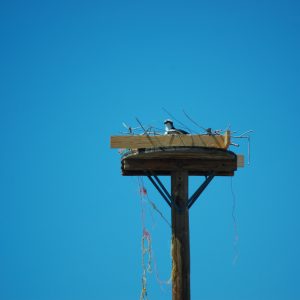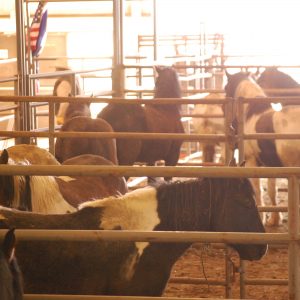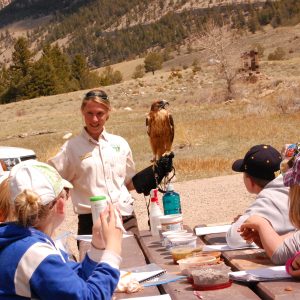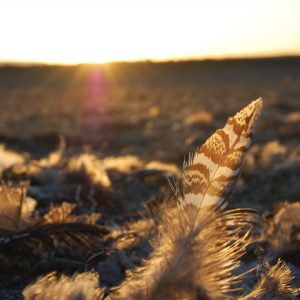It’s been quite a spring so far. Sage-grouse lek counting season ends next week, along with mornings that require waking up at 4am. Golden eagle nest monitoring season has begun, although unfortunately the nest I was originally assigned to monitor turned out to be inactive. Luckily, the Bighorn Basin has the greatest concentration of golden eagles in the country, so there are plenty others that are available for watching. I’ve been out and about mending fence, recording a few new raptor nests, seeking out nests of unknown species, scouting for seed collection sites, digging up specimens of the few blooming forbs around that I plan to collect from, recording powerlines using GPS, helping with the BLM’s Wild Horse and Burro Adoption event, and planning and teaching a lesson on raptor ecology for the local middle school’s Natural History Days (NHD).
Participating in Natural History Days, in addition to the Wild Horse and Burro Adoption, was a new task for me this year. My first day teaching, with the help of the friendly BLM Geologist and fellow raptor volunteer at the museum, was a great success. Now, on to my next teaching day on Tuesday…solo…
The lesson centers around raptors, or birds of prey, and features 2 live birds from the Greater Yellowstone Raptor Experience program at the the Buffalo Bill Center of the West. The first day we had a red-tailed hawk and a peregrine falcon, and next time I will have the great-horned owl and the peregrine falcon, because the hawk has prior engagements on that day. Many species-species and species-environment interactions are discussed in order to convey a message of the interconnectedness of life on the planet, as well as the importance of biodiversity and wide-reaching impacts of humans on wildlife and the environment. The lesson ends with a game of tag, in which some kids play the role of mice while others play the role of predators like rattlesnakes, red-tailed hawks, and great-horned owls. From this they can experience the difficulty of a prey species surviving the pursuit of predators in order to acquire food and feed their young, and that of a predator trying to feed its young while itself being pursued by apex predators like the owl.
Tag is probably almost as fun to watch as it is to play. I was actually able to play a little when one of my “mice” got tired and I had to take her place. As the number of mice dwindles from being tagged or “killed,” the predators start getting awfully hungry and competing more for the remaining mice. When the “car” (played by the Geologist) runs along the highway and “kills” predators like the hawk while it is on a kill, or a rattlesnake while it is sunning. The abundance of mice making it past the remaining predators results in the mouse food supply running low due to their overpopulation. In this way the students can better understand the checks and balances that are necessary to maintaining a relative balance in nature, and how it gets affected when even one type of predator or prey species is removed.
It was a pretty fun time had by all, I would say, including me. And although I’m somewhat nervous about my solo act, I’m looking forward to doing it again.




